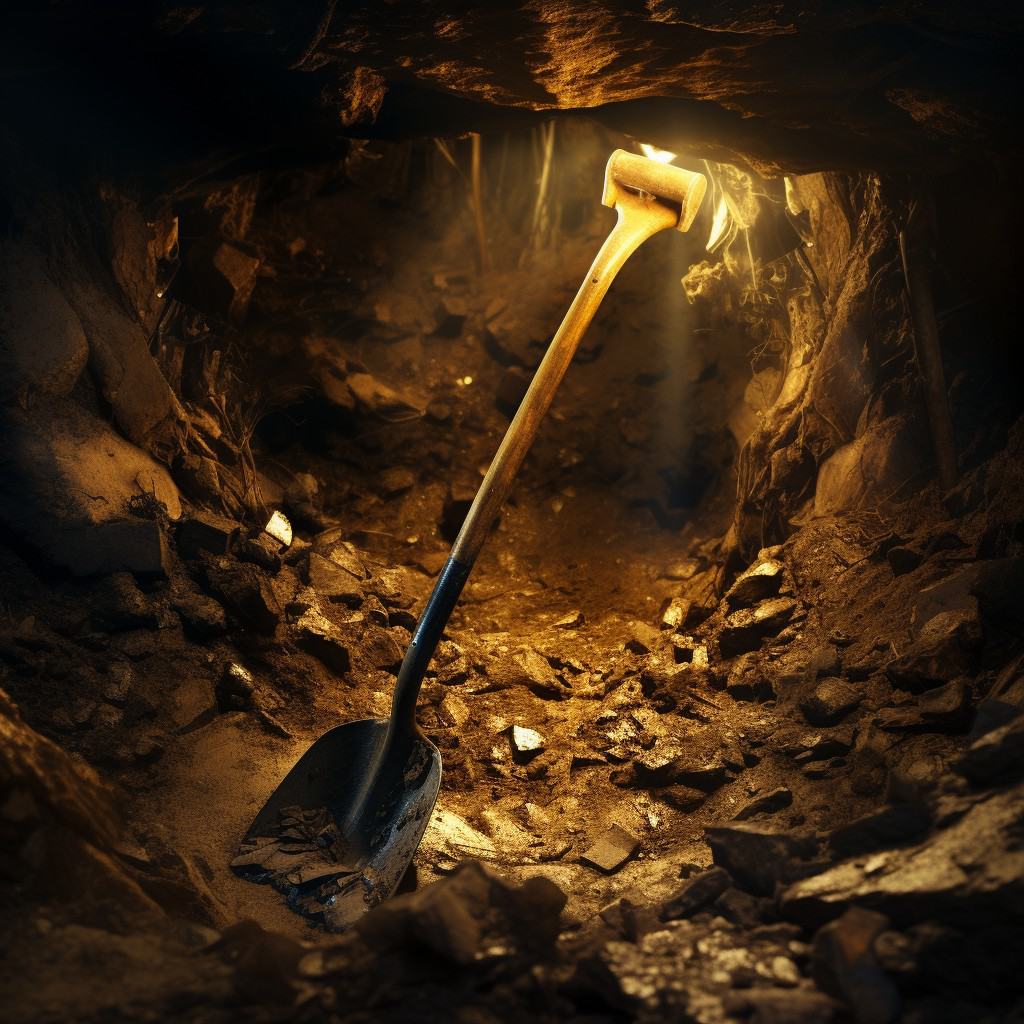From the early days of gold rushes to modern mining practices, shovels have been essential in extracting resources from the earth. Shovels have evolved from simple hand tools to machines capable of moving tons of earth in a single scoop but the role of shovels in extracting resources has been ever present.
Table of Contents
The Evolution of Mining And The Role Of Shovels In Extracting Resources
Mining has evolved dramatically since the gold rush in North America and Australia. In 1848, when gold was found in California, a global influx of fortune seekers was triggered, leading to the establishment of over 1400 towns or camps along hillsides and mountain streams. In Australia, the gold rush, which began in 1851, had a similar impact, with Victoria’s goldfields attracting thousands of people from around the world.
Gold Rushes of North America
The California Gold Rush was one of the most significant events in the history of the United States, with over 300,000 people arriving in the state in search of gold. Many of these fortune seekers were from China, which led to the establishment of Chinese mining communities in California.
The gold rush in Montana, which began in 1862, attracted miners from all over the world. The state’s silver mines also played a significant role in the development of the American West.

Australian Gold Rush and Its Impact
The Victorian gold rush in Australia profoundly impacted the country’s economy and social structure since the discovery of gold in Bendigo in 1851.
The Australian gold rush also had a significant impact on the country’s indigenous population, with many Aboriginal people being forced off their land to make way for mining operations.
The Role Of Shovels In Extracting Resources And Other Mining Techniques
During the gold rushes of the 19th century, miners relied on shovels to dig through soil and gravel in search of gold nuggets. As the demand for gold increased, so did the need for more efficient and effective mining tools, which led to the development of hydraulic mining techniques. The hydraulic technique used high pressure water jets to wash away soil and expose gold deposits. Shovels were still essential in this process, but they were now used with other machines and methods to extract resources more efficiently.
Today, shovels are still a critical component of modern mining operations. Large scale mining companies use massive shovels that can move up to 100 tons of earth in a single scoop. These machines are essential for extracting resources like coal, copper, and iron ore, which are used in everything from construction materials to electronics. As mining technology continues to evolve, the role of shovels in extracting resources will change and adapt to meet the needs of the industry.
Today, mining companies use various techniques to extract resources, including open-pit, underground, and hydraulic mining. Shovels are still used in many mining operations but have been replaced by more advanced machines such as excavators and draglines.
The Role Of Shovels In Extracting Resources And The Socio-Economic Impact Of Mining
Mining has significantly contributed to the socio-economic development of many regions, transforming settlements and creating financial and economic opportunities. In this section, we will explore the impact of mining on settlements and the financial and economic transformations that have resulted from mining activities.
Transformation of Settlements
Mining has had a profound impact on the settlement patterns of many regions. For example, during the gold rush in Australia, settlements such as Ballarat and Melbourne increased due to the influx of miners seeking their fortunes. Similarly, in South Africa, the discovery of diamonds and gold led to the growth of cities such as Johannesburg.
Mining has also played a role in the settlement of remote territories. For example, mining activities in the Ural Mountains of Russia led to the establishment of settlements in previously uninhabited areas.

Financial and Economic Transformations
The financial and economic transformations resulting from mining activities have been significant. The discovery of many natural resources, such as gold and diamonds, has led to the development of the global economy and the establishment of the monetary gold standard. Mining activities have influenced the use of paper money and the development of the global financial system.
Mining has been an integral part of the industrial development of many regions, providing employment and creating organizational constituents. Banks have also been influenced by the mining industry, with international financial capital centers often established in areas with significant mining activities.
Small-scale mining has also contributed to global economic and financial transformations, particularly in North Asia. However, the mining industry has also faced challenges, including exclusion and exploitation of local communities and environmental concerns.
Efforts have been made to promote sustainable development in the mining industry, focusing on responsible and sustainable business practices. Mining archaeology and landscape learning have also been used to understand better the impact of mining activities on the environment and local communities.
Final Thoughts
The evolution of mining from the gold rushes to modern techniques has been a long and complex process. Mining companies use various techniques and tools to extract resources today, but shovels remain essential to the industry.
Frequently Asked Questions
How did miners search for gold during the Gold Rush?
During the Gold Rush, miners searched for gold by panning in rivers and streams, using sluice boxes, and digging in the ground. They used simple tools like picks, shovels, and pans to extract gold from the earth.
Why was hydraulic mining made illegal in 1884?
Hydraulic mining was made illegal due to the environmental damage it caused and the danger it posed to people and property downstream. The debris from hydraulic mining caused flooding, destroyed farmland, and clogged rivers, making them useless for irrigation.
What were the tools used in Gold Rush mining?
The tools used in Gold Rush mining included picks, shovels, pans, sluice boxes, and rockers. Miners also used explosives to blast through rock and to create tunnels and shafts.






